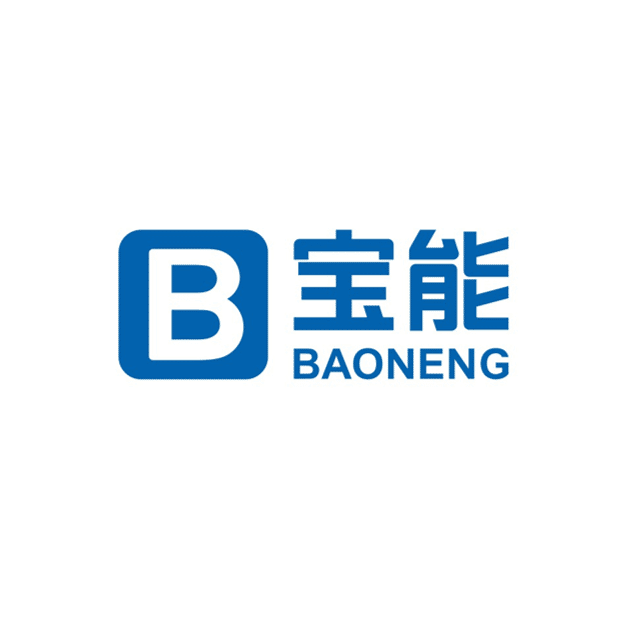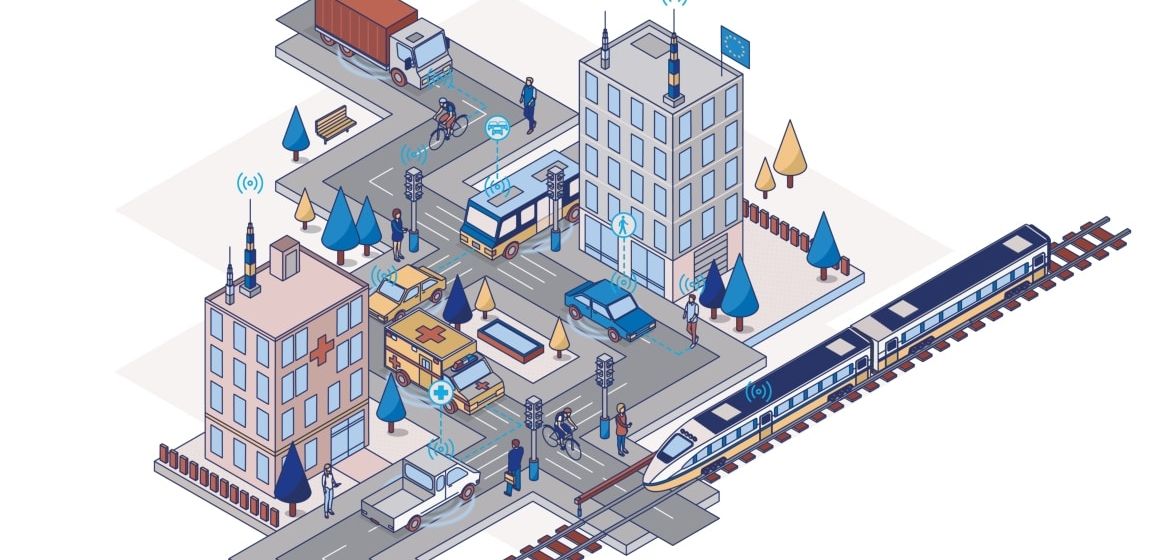
Europe’s leadership in connected and automated driving depends on technology-neutral, innovation-oriented policies
Dear Minister,
Serious concern has arisen in the telecoms and transport industries over the restrictive content of the forthcoming Delegated Act on Cooperative Intelligent Transport Systems (C-ITS). Although it is close to completion, the text still does not lay down the technology-neutral framework urged by the CEOs of 24 members of our associations (signatories included BMW, Daimler, Deutsche Telekom, Ericsson, Ford, Groupe PSA, Nokia, Telefonica and Vodafone) in their letter to President Juncker in July 2018[1].
Despite a welcome acknowledgement of cellular technologies, the draft Delegated Act only contemplates the Cellular Vehicle-to-Everything (C-V2X) technology family in the framework of a future revision of the Act in up to three years’ time, with no guarantee to date that a level playing field will be ensured with respect to compatibility and interoperability requirements.
The current draft effectively endorses Wi-Fi based communication (known as “ITS-G5”) as the baseline technology for connected cars in the EU, at the expense of a mature and standardised alternative[1]: LTE-V2X (which is the current realisation of C-V2X). We believe this contradicts the principle of technology neutrality and will prove to be a very costly missed opportunity for Europe.
Indeed, LTE-V2X is regarded internationally as the foundation stone which will pave the way towards the most advanced safety services enabled by 5G, in particular for vulnerable road users. Only C-V2X offers such a clear evolutionary roadmap starting with LTE-V2X today and evolving into 5G-V2X tomorrow, making it the only future-proof technology.
A decision exclusively favouring Wi-Fi technology today should thus be carefully considered. It would bear negative long-term consequences for Europe, since Wi-Fi offers no prospect of compatibility with 5G. A costly migration path would be required, resulting in significant sunk costs. It would stall C-V2X roll-out and investments in 5G for automotive and alongside the road network would be adversely affected.
LTE-V2X must be allowed to succeed as the first building block en route to the full realisation of 5G potential, ensuring the competitiveness of key industry verticals such as automotive as well as the telecom sector. A wrong decision at this critical juncture would put in jeopardy Europe’s leadership and investment in 5G.
Connected vehicle and roadside infrastructure technology is evolving at a very fast pace. LTE-V2X field tests and deployment projects are under way in many EU countries as well as globally with the first market introductions foreseen in 2019, within the same timeframe as the Delegated Act publication.
Leveraging all the previous work from European standardisation organisations, C-V2X offers unique benefits as a single technology platform, combining both direct short-range (not requiring network coverage or a subscription) and long-range modes.
It will, unhindered, significantly improve road safety in Europe through direct vehicle-to-vehicle, vehicle-to-infrastructure and, vehicle-to-network communication, but also provide new vehicle-to-pedestrian applications owing to its unique smartphone integration capacity, thereby reducing vulnerable road users’ casualties (43% of EU road fatalities in 2017)[1].
C-V2X also provides the fastest way to reach large-scale penetration of C-ITS: all new vehicles are expected to feature embedded cellular connectivity by 2021-2022. Many OEMs have already deployed some Day 1 C-ITS services using existing 3G/4G networks and LTE-V2X long-range mode.
We strongly believe that Europe should capitalise on these early deployments and would gain substantial economic benefits by maximising the synergies between transport and telecom network infrastructures. Today, LTE network population coverage averages 97.9% in Europe (89.9% of rural EU households) with a rapid year-on-year increase[2], whereas ITS-G5 deployment has not yet begun.
In addition, consumer 5G is rapidly moving from trials to early commercialisation. Between 2018 and 2020, 48 countries will launch 5G mobile services across North America, Europe, the Middle East and Asia-Pacific.[3]
This is not about promoting individual companies that are about to launch their respective products. It is about creating the right framework which will support Europe to make the best technology choices in the future, to achieve our common objective: making the roads safer for all.
We encourage you to support a truly technology neutral approach to C-ITS through a Delegated Act inclusive of LTE-V2X, as it holds the promise of better safety. C-V2X is close to deployment in every world region as our entire ecosystem has stepped up its efforts to be market-ready in the upcoming months. However, it is absolutely critical for our industries that the EU regulatory framework provides sufficient legal certainty in order to pursue and accelerate current roll-out plans for C-V2X.
Afke Schaart Johannes Springer Lise Fuhr
VP and Head of Europe, Director General, 5GAA Director General, ETNO
Russia and CIS, GSMA
[1] CEO Letter to President Juncker on connected car legislation
[2] Cf. Annex to this document
[3] Road Safety in the EU – Trends, statistics and main challenges
[4] Broadband Coverage in Europe 2017, European Commission
[5] GSMA intelligence
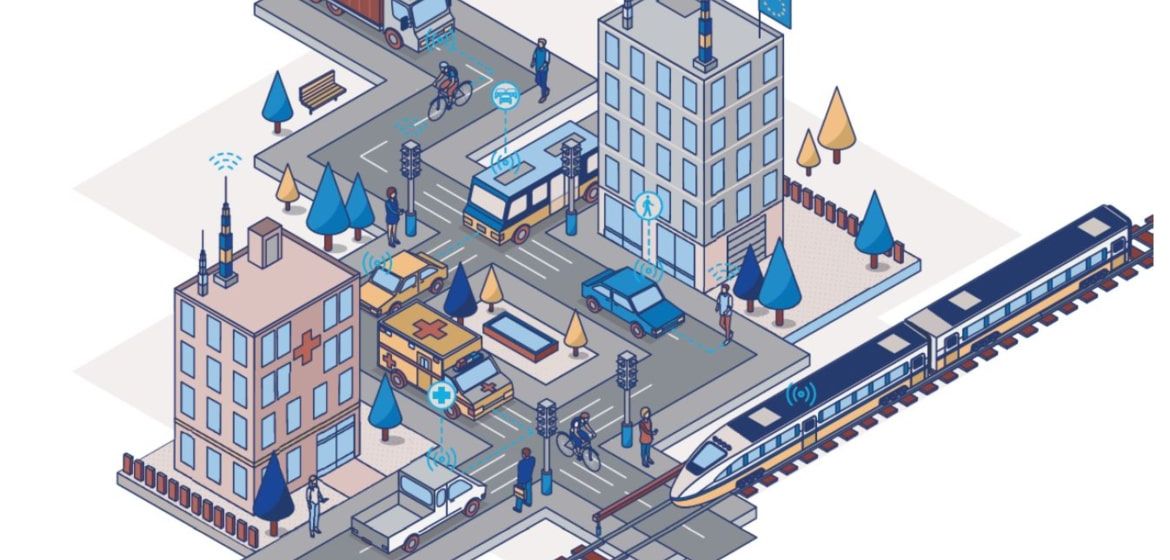
C-ITSEU
The Delegated Act currently being drafted by the European Commission will have a significant impact on the future deployment of Cooperative Connected and Automated Mobility in Europe. It will regulate the deployment of Cooperative Intelligent Transport Systems (C-ITS), which enable the communication between vehicles, infrastructure and with other road users.
5GAA is a proponent of Cellular-Vehicle-to-Everything (C-V2X), a unified technology platform for connected vehicles, including connectivity to vulnerable road users and infrastructure, encompassing LTE-V2X and 5G-V2X. C-V2X technology thus offers a direct evolution path to 5G.
As illustrated below, C-V2X includes both direct short-range communication in the 5.9 GHz ITS spectrum band (not requiring network coverage or subscription) and long-range communication in licensed spectrum allocated for 4G and 5G, into a single, cost-effective platform.

While 5GAA fully shares the European Commission’s objective to “make Europe a world leader in the deployment of connected and automated mobility”[1], 5GAA is very concerned that the Delegated Act will rule out C-V2X, the most recent technology for C-ITS.
5GAA strongly advocates for a forward-looking C-ITS regulatory framework, allowing technology neutrality and evolution. The future requirements should ensure an effective, cost-beneficial and proportionate regulatory framework, as per the Commission’s Better Regulation guidelines, ultimately improving road safety, traffic efficiency and air quality, while fostering innovation.
5GAA believes that the future Delegated Act should abide in all its dimensions by the technology neutrality principle to prevent unfair market distortion. This principle should be respected in letter and spirit: requirements, standards or specifications governing the deployment of C-ITS should be non-discriminatory, avoiding any technology lock-in.
The deployment of different connectivity solutions, including C-V2X, should be allowed and embraced by the Delegated Act, on par with any other technology.
[1] “On the road to automated mobility: An EU strategy for mobility of the future” COM(2018) 283
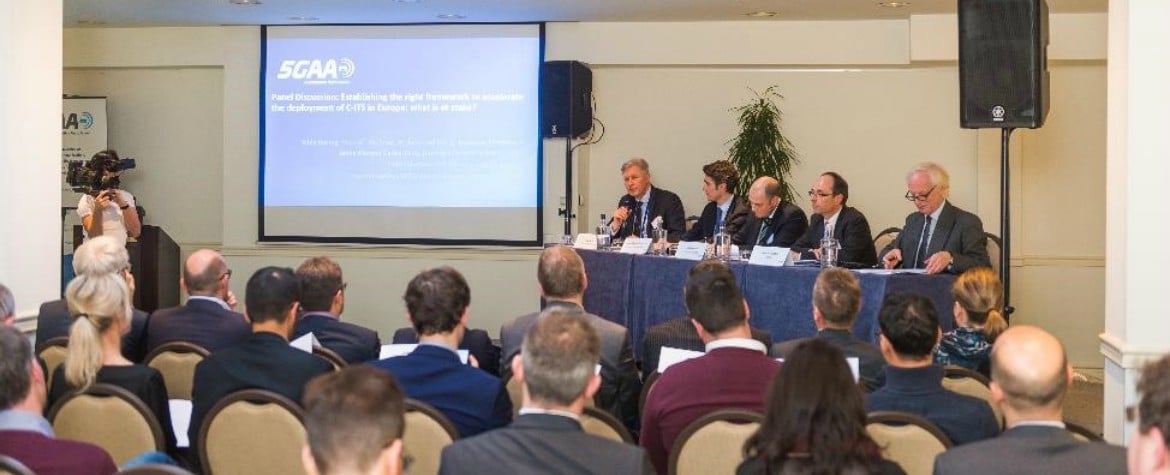
Peaceful coexistence of C-V2X and ITS-G5 technology offers the highest net benefits for Europe
5GAA and EU policymakers discuss future of 5G for connected and automated vehicles
12 December 2017, Brussels, Belgium – The 5G Automotive Association (5GAA), a cross-industry association of the telecoms and automotive industry, held a policy debate on Tuesday 5 December in Brussels to discuss the concrete actions necessary to implement 5G connected and automated vehicles in Europe. A recurring theme in Tuesday’s debate was the cohesive development and implementation of cellular “vehicle to everything” (C-V2X) technology, the technology that will enable automobiles to communicate via cellular networks to other connected devices but also the possibility of ad-hoc communication without any cellular network involvement (e.g. in case of weak coverage). Policymakers and industry face the ongoing challenge of creating a cohesive framework that enables private sector innovation while ensuring a safe and economically viable rollout of new technologies.
Attendees heard from a wide range from various European political and administrative representatives, including Eddy Hartog, EC Head of Unit Smart Mobility and Living, Attila Benedek (Adviser to István Ujhelyi MEP, rapporteur on European C-ITS Strategy), Jaime Moreno García-Cano of the Spanish traffic authority or Andreas Geiss, EC Head of Unit for Spectrum Policy. 5GAA was represented by its Secretary, Markus Dillinger of Huawei and board members, Luke Ibbetson of Vodafone, Joachim Göthel of BMW, Rainer Krumrein of Daimler, and Friedhelm Ramme of Ericsson.
The debate coincides with the Commission’s ongoing public consultation on its European Strategy on Cooperative Intelligent Transport Systems (C-ITS), which runs through January 5, 2018. C-V2X technology stands to significantly improve road safety and facilitate traffic flows in the EU. Ultimately, the benefits of this technology across the EU could save the several billion euros that are lost every year to traffic accidents and congested roadways.
Markus Dillinger, 5GAA Secretary and Member of the Executive Committee: “5GAA was founded to underscore the urgency in developing technology that makes our roads safer and smarter. Today’s debate brought together public and private sector stakeholders to discuss the capabilities of such technology as well as the acceleration of creating a regulatory framework in which the industry can work.”
During the event, analysts from Analysys Mason and SBD Automotive presented the findings of a cost-benefit analysis of implementing the C-V2X technology. The socio-economic returns of deployment of C-ITS systems may amount to EUR 43 billion by 2035 in Europe, if both C-V2X and the Wi-Fi Standard IEEE 802.11p are able to co-exist in the 5.9GHz spectrum band. The 5GAA also presented a study assessing the road safety benefits of LTE–V2X (PC-5) and IEEE 802.11p in the EU, which indicates that LTE-V2X (PC5) outperforms 802.11p in reducing fatalities and serious injuries. In addition, it demonstrates that the absence of interoperability between technologies is unlikely to present a substantive barrier to the reduction of road accidents in the short to medium term. Bill McKinley, 5GAA rapporteur on tests and trials, and Rainer Krumrein of Daimler also presented 5GAA’s perspective on C-V2X performance and future capabilities.
The event culminated in a panel discussion to discuss the right framework to accelerate the deployment of the C-ITS across Europe. Particular attention was given to short-range communications in the 5.9 GHz band and the four guiding policy principles established by the European Commission: uncompromised safety services for all users in case of multiple technologies implementation, technology neutrality of spectrum regulation, efficient spectrum use and introduction in the longer-term of 5G for the further development of cooperative, connected and automated mobility.
Luke Ibbetson, R&D Director Vodafone Group and member of 5GAA: “Both C-V2X and ITS-G5 technologies should peacefully co-exist in the 5.9 GHz band. The socio-economic and road safety studies presented at this event indicate that co-existence offers the highest net benefits for the European economy, amounting to EUR 43 billion by 2035.”
Joachim Göthel, Senior Manager Project 5G-Alliance of BMW and member of 5GAA: “C-V2X offers a strong evolution path to 5G which is absolutely essential to enable full connected and automated driving in the future, while enabling a fast roll-out for many functionalities in the very short-term, utilizing existing cellular networks.”
The presentations made during the Workshop are downloadable here below:
1. Introductory 5GAA Presentation
2. Presentation on cellular V2X socio-economic benefit study
3. LTE-V2X (PC5) and road safety in the EU
4. 5GAA Presentation Trials
5. Daimler view on V2X – 5GAA Policy Debate
About the 5GAA
The 5GAA is a cross-industry association between the cellular and automotive industries to develop, test and promote communications solutions, initiate their standardisation and accelerate their commercial availability and global market penetration, to address society’s connected mobility and road safety needs with applications such as automated driving, ubiquitous access to services and integration into smart city and intelligent transportation.
Pictures credit © Thomas Blairon, 2017. Reproduction of this image is authorised, provided the source is acknowledged

5GAA Study | The cost-benefit analysis on cellular vehicle-to-everything (C-V2X) technology and its evolution to 5G-V2X
This report, authored by independent telecoms, media and technology consultants Analysys Mason together with automotive consultancy SBD Automotive, assesses the benefits of cellular vehicle to everything (C‑V2X) technology for delivery of vehicle-to-everything (V2X) communication. The report, which has a focus on the benefits of such solutions in Europe, uses qualitative evidence, and describes quantitative cost–benefit analysis that the consultants have undertaken, relating to deployment of C‑V2X.
The purpose of the study has been to examine qualitative evidence and perform quantitative analysis, regarding the net benefits of C‑V2X. Quantitative analysis is focused on the European market, where the European Commission (EC) is currently undertaking a public consultation on the deployment of cooperative intelligent transport systems (C‑ITS).
Read the full study here.
As part of this study, primary research has been conducted to elicit views from the mobile and automotive industries on the benefits of C‑V2X. One-to-one interviews with companies involved in the 5GAA were held, in order to identify several key benefits, as summarised in Figure 1.1 below.
A snippet from the report featuring the benefits of C-V2X [Source: Analysys Mason, 2017]
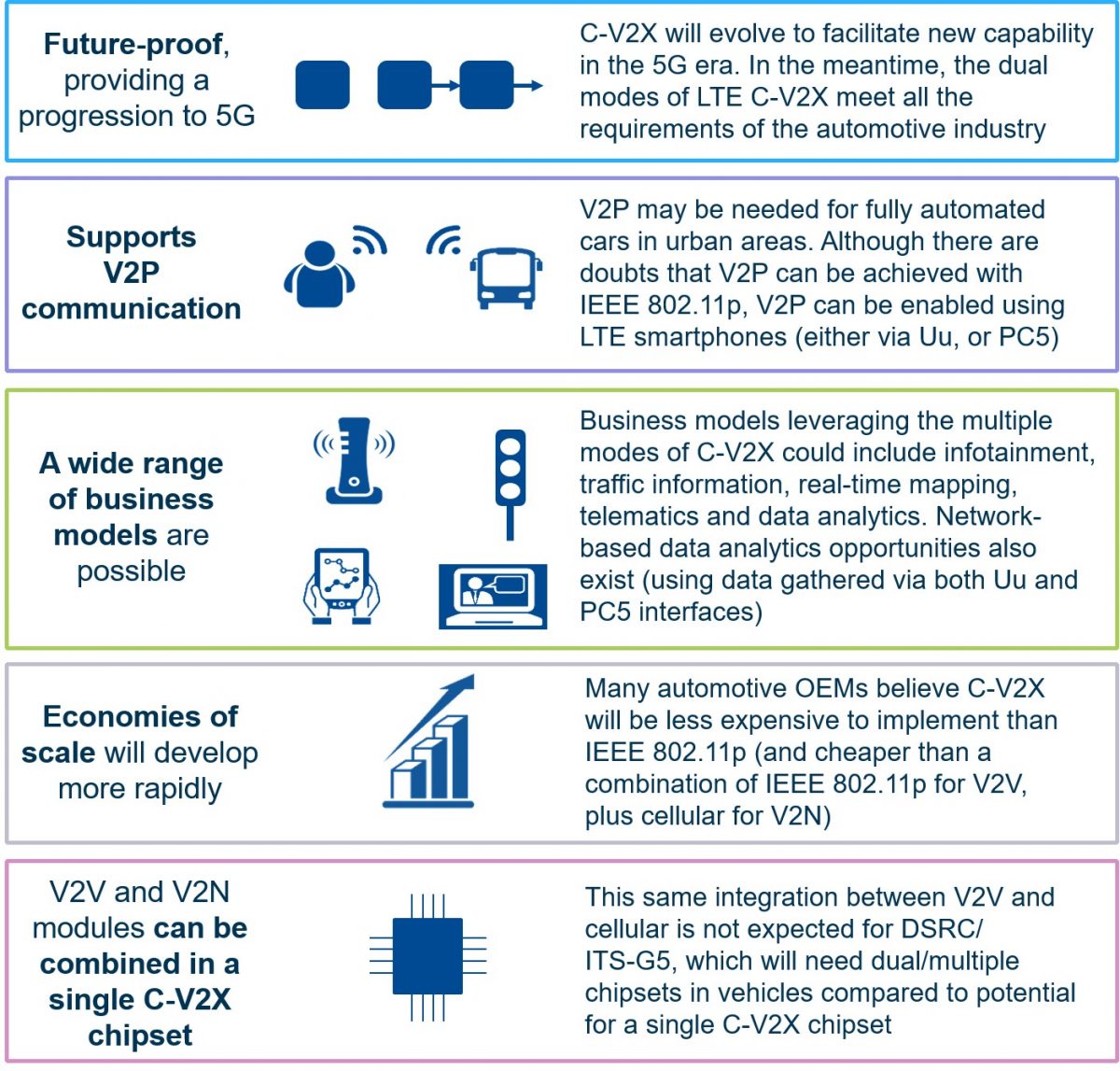

Bright Regulatory Trends of C-V2X in Asia Pacific Region
Shanghai, China – On 16 November, The 5G Automotive Association (5GAA) hosted its Second General Assembly. Following announcements of the association’s progress and growth worldwide, 5GAA inaugurated the Asia Pacific Roundtable. Here, regulators from China and South Korea joined the discussion, sharing industry trends for the Internet of Vehicles and future Intelligent Transport Systems, as well as a number of real-life demonstrations of technology that is being developed in this region.
5GAA is a unique organisation on the global stage: with leading members of the automotive and telecommunications industry as founders. The association aims to pioneer digital transformation on our roads, creating a safer and more sustainable road environment for all.
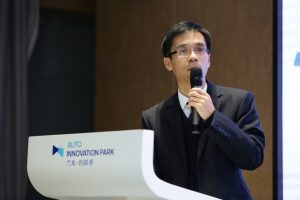
At the Asia Pacific Roundtable, Mr. He Guangjin from the Chinese TMRI (Traffic Management Research Institution) of MPS (Ministry of Public Security), presented the demonstration made at WIOT 2017 (World Internet of Things Expo) in Wuxi. This was the first demonstration from the Chinese public security industry where the LTE-V2X technology was employed. Additionally, it was so a premiere for the official traffic management system to be opened to vehicles on open roads. TMR also announced its plan to build a larger LTE-V2X pre-commercial trial including 20 to 50 intersections in 2018, to verify the broadcasting of real-time traffic conditions of intersections and the reception of information transmitted from vehicles. Additionally, TMRI is actively working on industry and national standards such as “Road Traffic Signal Controller I2V Information Distribution Interface Specifications”, “Adaptive Verification Management Regulation of Intelligent & Connected Vehicles (ICV) on Public Roads”, etc.

Dr. Cen Yanqing from the Chinese RIOH (Research Institution of Highway) of the MOT (Ministry of Transport) shared the important progress of the MOT. The ministry is paying close attention to automated driving and has already set up a dedicated working group to coordinate the corresponding ministries and guide the work on automated driving technology. In order to achieve automated driving, it is not sufficient to equip autonomous vehicles but it’s also needed to have an intelligent reformation of the road infrastructure and vehicle-to-road, vehicle-to-vehicle, vehicle-to-person communication and interaction in an effective way. To further promote the automated driving, the Ministry of Transport has built test zone for commercial vehicles verification in Tongzhou, Beijing, including specific scenarios e.g. ramps, intersections, and traffic lights.
When Dr. Cen was asked about whether MOT will mandate any technical specifications, he clarified there is no mandatory regulation so far. The MOT – as a department which uses technology – is opened to the utilisation of the V2X technology, but will select the best and most efficient technology eventually, he said. He also claimed that the MOT would support some of the Chinese telecommunication corporate contributions such as CMCC, Huawei, and Datang. Finally, he declared “we cannot implement two technologies but only one”.
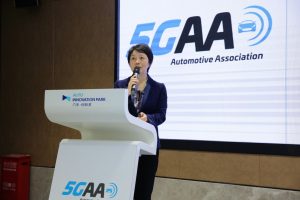
•Vice President of the China Academy of Information and Communications Technology, Ministry of Industry and Information Technology, China
•Chairman of the IMT-2020 (5G) Promotion Group
Ms. Wang Zhiqin, from CAICT (China Academy of Information and Communications Technology) of MIIT(Ministry of Industry and Information Technology), explained that the national CAV (Connected and Automated Vehicles) industry development committee advises to promote the LTE-V2X technology deployment and application, and its evolution to 5G and internet of vehicles integration development. He also announced the release of the Guide to the Construction of Standard Architecture for CAV Industry Development jointly developed by MIIT and NSC (National Standardization Administration), in which the LTE-V2X and 5G technologies are greatly highlighted in the information and communications volume. When asked about the spectrum of the Internet of Vehicles in China, Ms. Wang expressed that the government attaches great importance to it and needs prompt issuance and release of a positive guidance to the industry. She believes China should release this C-V2X spectrum relatively soon.
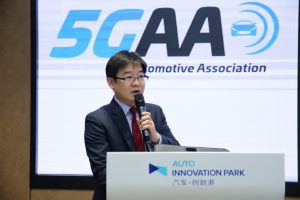
Deputy Director, ITS and Road Safety Division, Road Bureau, Ministry of Land, Infrastructure and Transport, South Korea
Mr. Chang-ki Kim, from the MOLIT (Ministry of Land, Infrastructure, and Transport) explained that his division in Korea is implementing two strategies to promote the commercialisation of Internet of Vehicles. The first strategy consists of focusing on the C-ITS safety aspect by developing and commercialising the RoDAS (Road Driving Assistant Systems) by 2020 in accordance with the National ITS Master Plan. As CAV (Connected and Automated Vehicles) will improve road safety issues under the mixed condition of AV (Automated Vehicles) and LV (Legacy Vehicles) in both highway and urban areas. MOLIT will launch, as its second strategy, the transportation renovation program by promoting and integrating the C-ITS and CAV technologies under their CAD (Connected and Automated Driving) Test-beds. Additionally, he emphasised that deploying those Test-beds in Korea would include the verification of various communication techniques, e.g., C-V2X (LTE, 5G), under the real and dynamic road environment. Mr. Kim expressed his intention to invite all ICT and CAD testing companies to conduct their service applications and to develop their cooperation and sharing models by joining those Test-beds.


